There have been many experiments in the past designed to understand the connection between humans and our closest relatives, the great apes. In fact, scientists have time and again tried to create a hybrid of humans and apes, theorizing that the close DNA match might make this viable. In 1929, Soviet scientist Ilya Ivanovich Ivanov apparently came very close to creating a human-ape hybrid. Even though there is considerable curiosity around creating a hybrid of man and ape, there are many skeptics in the scientific world.
Concerned by his experiments, authorities became alarmed of the prospects of a “humanzee” hybrid. To avoid the possibility of creating such a creature, and what it would mean for society and our place in the universe, Ivanov was sent to exile in Kazakhstan in 1930, where he died a couple of years later.
The Research Continues
Nevertheless, there have been consistent research efforts towards understanding the genetic similarities and compatibilities between apes and humans. In the primate family, apes such as chimpanzees, gibbons, and gorillas are often attributed human-like intelligence and features.
In fact, scientists have continued their research into the grey area where apes and humans overlap throughout the 20th century. For example, in 1977, genetic researcher Michael Bedford found out that human sperm can penetrate the outer protective covering of a gibbon egg. This led to speculation that human sperm could be used to fertilize the egg of a chimpanzee or other primate, creating a hybrid.
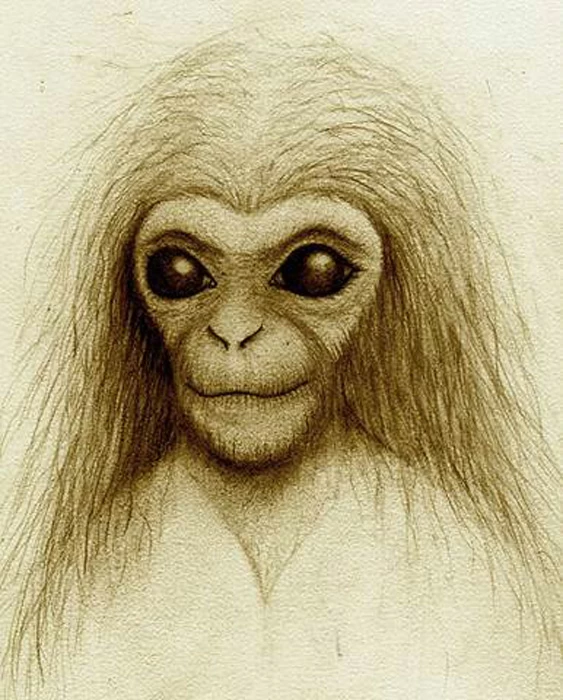
Sometimes, in the laboratory of mutation that is the natural world, things are created which humans only thought possible in their imagination. This article also covers one such extraordinary case of creation that seemingly blurs out the lines between an ape and a human.
Before we go into the rarity of nature, one should remember what mutations can create. Mutations are the natural way that the gene pool of a population alters, and how new species develop.
The mutations themselves can be few in number, but can have a drastic impact on the traits of a creature. A single mutation can lead to unique characteristics in an animal or plant. Thus, even though a hybrid may not be possible by artificial human means, it can still be created by nature.
Sometimes, some of nature’s creations emerge as anomalies. One such anomaly from nature was Oliver, the humanzee.
Oliver
Oliver earned the name “humanzee” because he was very different from other apes or primates. While many apes could display human-like traits or behavior only with training, Oliver himself looked more similar to a human than other chimpanzees and acted like them too.
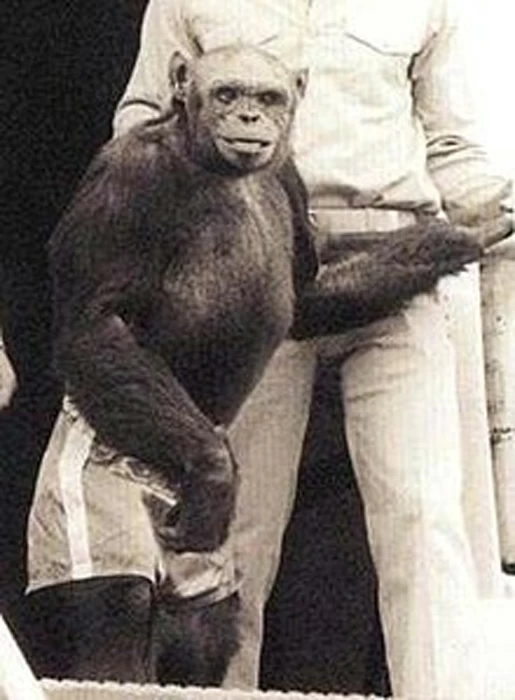
Oliver was therefore a real exception among apes, and people were often confused about his classification. Even when he was displayed as a “freak” creation of nature, Oliver was referred to as the missing link between humans and chimpanzees.
And this seemed to not just advertising. In fact, there were some medical claims that suggested Oliver possessed 47 chromosomes, one more than humans and one less than chimpanzees.
His genetic makeup aside, Oliver acted like a human and resembled humans in physical traits too. He had human-like facial features that made him look unlike an ape. He had light-colored eyes that were also unusual for an ape. He also had pattern baldness and a soft voice which made him look and sound like a man.
If his looks and voice were not enough, even his behavior was human-like. For example, Oliver was bipedal by nature. Now, apes can become bipedal if they are trained that way, and there are many apes in circuses who walk on their two hind limbs.
However, their natural gait will always remain on all fours. but by contrast, Oliver was comfortable as a biped and walked like a man naturally. And this led to speculation as to what he really was.
The Early Life Of Oliver
Oliver is said to have been born in the late 1950s, somewhere around 1957. By the time he was acquired by his human guardians Frank and Janet Berger, Oliver was already a young animal, and had already developed these unique traits.

He was born as a wild animal, and captured from the forests of the Congo. Oliver’s unique traits and behavior made the Bergers believe that Oliver was not a chimpanzee but a human-chimpanzee hybrid. According to older accounts and photos, Oliver had a smaller, flatter face than his ape peers.
Many also believe that Oliver preferred the company of humans more than chimpanzees. Janet Berger has even gone on record saying Oliver had was more attracted by human females than chimpanzee females. His attraction towards Janet Berger by the time he reached 16 might also have been due to the way his ape peers treated him.
Frank and Janet Berger were famous animal trainers who frequently appeared on the popular Ed Sullivan Show. Oliver started appearing on the show frequently. Because of this, he grew popular, and public curiosity in him also grew to a great extent.
The Bergers owned other chimps who they regularly trained, but according to the couple, Oliver lived in exclusion from the chimpanzee community because of his unique qualities and looks. On the other hand, Oliver seemed to be fine with not being part of the community. Although unusual, Oliver preferred the company of humans over animals.
This seemed to further establish him as more of a human than an ape. His intelligence and abilities also surpassed those of his fellow apes. Oliver would help his trainers in handling other apes, feeding them sometimes.
Another major sign that Oliver had near human-like intelligence was his ability to use tools and simple machines. He learned to manage heavy loads by pushing them around in a wheelbarrow.
Oliver’s Later Life
As Oliver grew old, his human-like intelligence and behavior only developed further. For example, he habitually drank morning coffee like a human. Moreover, he would often drink cocktails in the evening, being able to mix drinks and create his own drink as per taste.
His logical abilities also grew with time as he could make decisions as per the situation at hand. It is possible that Oliver’s natural human-like abilities were heightened due to his proximity to humans, and his natural intelligence helped him learn more human abilities. But Oliver’s abilities were beyond the usual mimicry abilities that chimpanzees exhibit.
However, high intelligence, unique abilities, and strength posed a challenge to the multiple handlers he had in his lifetime. Oliver was transferred between several owners until 1986, when he was sold to a laboratory.
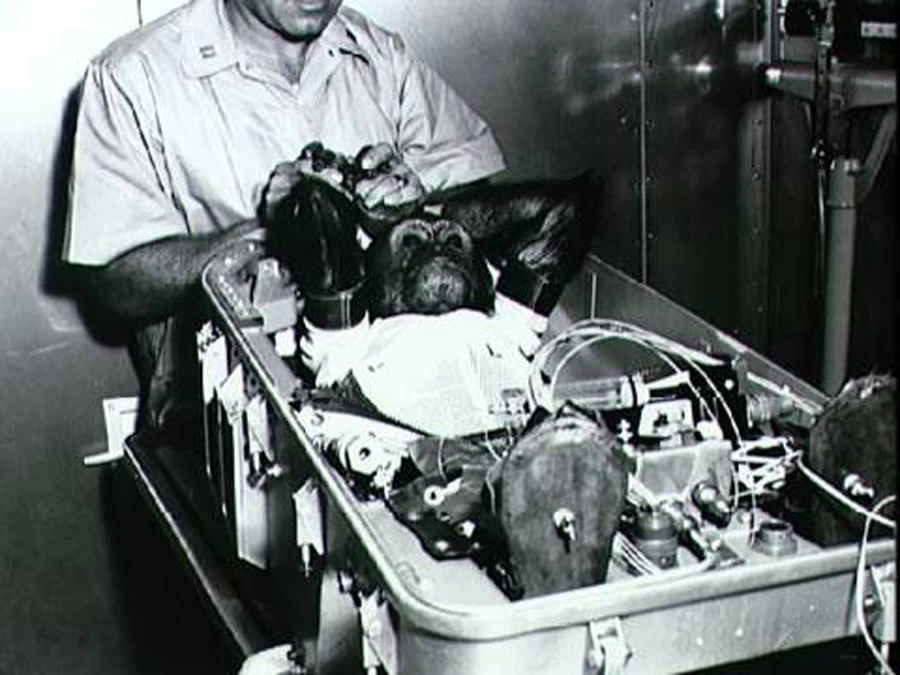
While people were curious to study Oliver’s genetic and physical traits, his unique behavior saved him from harsh experiments that other chimpanzees were subject to. Because of the uncertainty as to whether he was a chimpanzee or not, he did not make a suitable specimen for usual experiments. According to researchers, any test on Oliver would not have given viable results because of his uniqueness.
Life In The Lab
In 1989, Oliver was sold again, to a laboratory called the Buckshire Company. The lab did not perform any experiments on him but restricted his movements in a small cage. This led to the development of muscular atrophy and arthritis in Oliver’s joints.
Oliver spent around seven years of his life in the lab, in captivity inside a small cage. However, in 1996, he was rescued and moved to a chimpanzee retirement center, where he lived for the rest of his life. During his time at the retirement center, the University of Chicago tested Oliver.
- “Freak Shows”: P T Barnum and the Circus of Exploitation
- Who was Dina Sanichar, The Real-Life Mowgli Raised by Wolves?
The tests established that Oliver was indeed a chimpanzee and not a hybrid. In point of fact, it was found that Oliver possessed 48 chromosomes and not 47, just like any other chimpanzee in nature. In fact, mitochondrial DNA isolated from Oliver showed that the ape belonged to a Central African chimpanzee subspecies, already known for its human-like features.
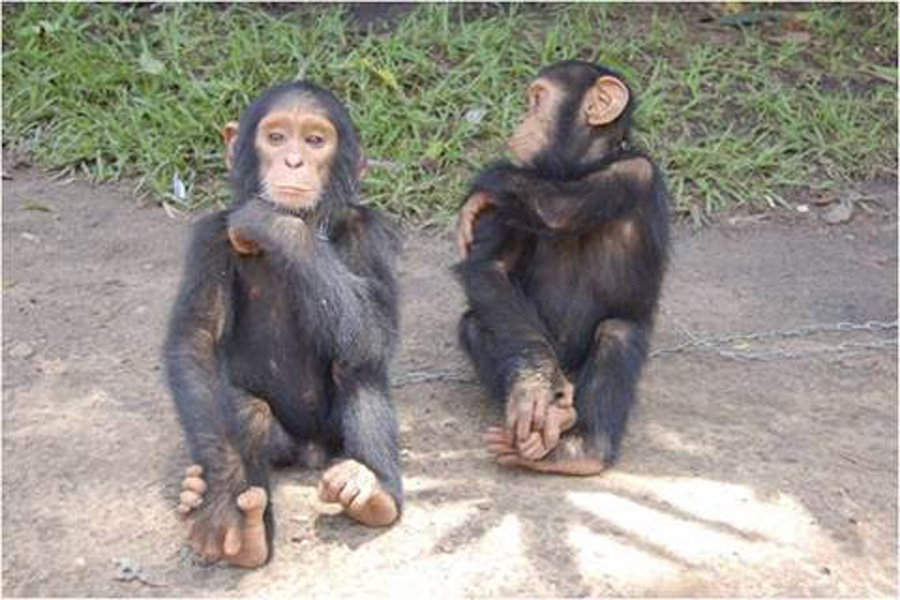
He, however, had a slightly different genetic makeup than other chimps that made him incline towards human characteristics. Thus, Oliver was simply an extraordinary mutant among chimpanzees. Mutants like Oliver are very rare and may not appear again.
In Peaceful Retirement
Oliver’s examinations also showed that he had been mishandled, and it was only after a petition from the Primarily Primates sanctuary that Oliver was rescued and sent to a chimpanzee retirement center. Oliver spent the rest of his life in an open-air sanctuary with another female named Raisin, who was kept as a companion to him in his old age.
By this time, Oliver was mostly blind and less active. Thus, he could not interact with the younger chimps of the sanctuary. His later life was shared online as he regularly indulged in human-like activities. For example, he would paint sometimes and even attend fruit smashing parties.
According to those who knew Oliver in the Primarily Primates sanctuary, he was quite gentle and easy to interact with. All the rough handling that Oliver faced came from his time with animal trainers, labs, and entertainers.
On June 2, 2012, that Oliver passed away in his sleep peacefully with Raisin by his side. He was cremated, and his ashes were spread on the sanctuary ground to honor his memory and the time he spent there.
After his passing, Primarily Primates authorities decided to convert Oliver’s living grounds into an enrichment habitat for other chimps. Two years after the chimpanzee’s passing, Oliver’s playground was unveiled as a tribute to him.
The enrichment habitat was then opened for use by other chimpanzees. The habitat has a PrimaDome structure with grassy floors and different climbing structures to keep chimpanzees active. Moreover, there are hammocks and a cupola where chimpanzees can rest and view the skyline of the sanctuary.
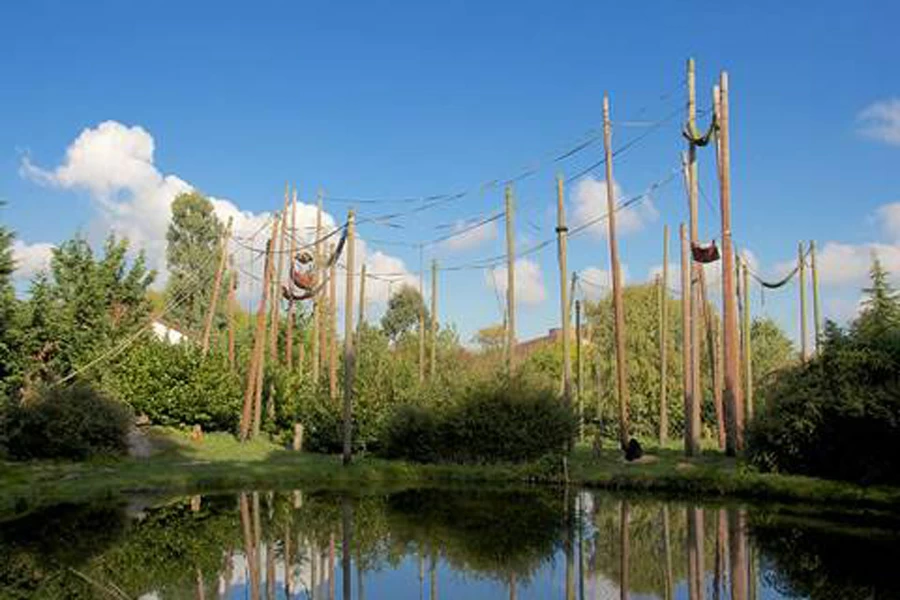
The playground is connected with the habitats of chimpanzees with overhead tunnels so that the space is accessible. Groups of chimpanzees are able to interact and socialize in one space at a time.
A Chimpanzee After All
Oliver might have been portrayed as a humanzee for the amusement of the general public, but he was an animal at the end of the day. Oliver is a case study of the importance of being gentle with animals, especially those who have been torn away from their families.
Chimpanzees and other apes are often captured from the wild for commercial purposes even today. Whether it is for lab testing or as circus entertainment, apes are often separated from their natural habitat and family.
Oliver captured the attention of people around the world, but in the end that attention came from him being considered a “freak.” His unique characteristics saved him from tests and experiments, but he was still poorly treated and neglected.
This led to a decline in his health and abilities. In human habitat, Oliver lived a life of 55 years. If he had stayed in his natural habitat, his life span could have been much longer.
Cruel Treatment
Throughout his life, Oliver was feared and ill-treated because of his strength and unique abilities. People who kept him did so primarily for commercial purposes, and he was exposed to rough handling to keep him in control.
Oliver lacked a stable, natural life as he was sold off from one handler to another. This may have prematurely aged him and caused some of the multiple ailments he suffered from. While earlier reports portray Oliver as a brute, unpredictable, difficult being, the sanctuary he lived with later describes him as a gentle giant who liked meeting other chimpanzees and humans.
He especially liked helping people and chimpanzees out in daily chores. Oliver’s example teaches us that animals can coexist with humans with kindness and empathy. It is always better to leave an animal in his natural habitat than bringing him into human society and nakedly profit from him.
Even today, scientists are still trying to create a hybrid between humans and apes. Oliver’s genetic makeup could help scientists in understanding the mutations that create humanoid features in apes.
However, the sanctuary where Oliver spent his later years has prohibited scientists and scientific tourists from accessing Oliver’s remains. This might also be another reason why the sanctuary decided to cremate Oliver.
Oliver’s life is an example of how intrusive human attention and intervention can be. Oliver’s memory exists as an eventful history of an extraordinary, rare being. And a unique one: after Oliver’s death in 2012, there have been no reports of anything even remotely similar, anywhere in the world.
Top Image: Chimpanzees are the closest genetic relative to humans. Source: Patrick Rolands / Adobe Stock. Inset: Oliver the Humanzee (Wikipedia / Public Domain)
By Bipin Dimri